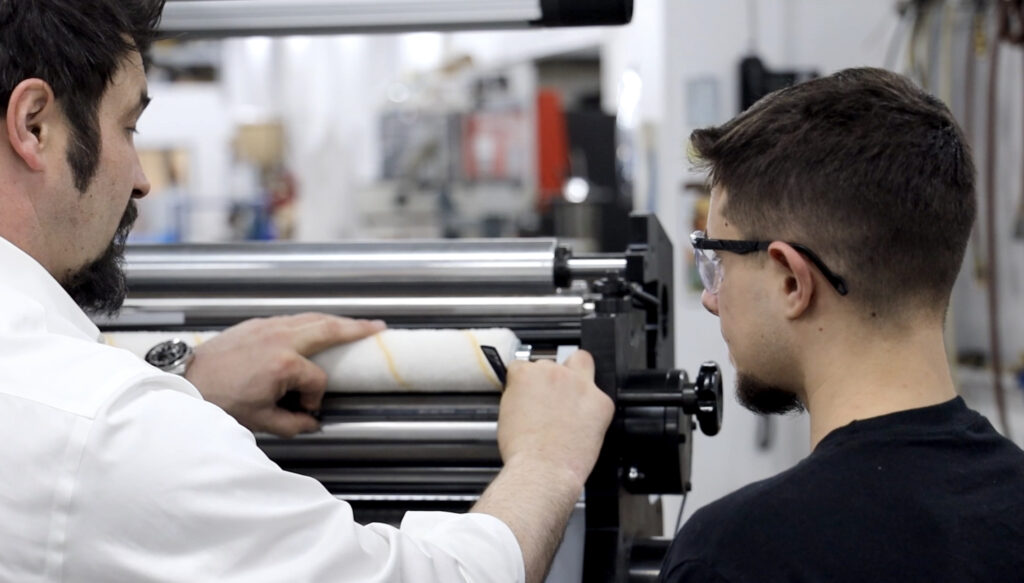This article was originally published on 5/11/2022 and updated on 12/23/2024
Packaging plays a crucial role in protecting products and ensuring they reach consumers in perfect condition. When sealing fails, however, it can result in damaged goods, contamination, and loss of consumer trust. Understanding the common causes of sealing failure is essential for improving reliability and maintaining the integrity of your packaging processes.
This guide explores the main reasons for sealing failure and provides actionable strategies to prevent them, including the benefits of using advanced finishing equipment like Tamarack’s Vista® Window Patching Equipment for precision and efficient production.
Common Causes of Sealing Failure
Sealing failures in packaging often result from a combination of material issues, process inconsistencies, and environmental factors. Addressing these common causes can significantly improve the reliability and durability of packaging seals.
Material Incompatibility
The success of a seal depends heavily on the compatibility of the materials used. When adhesives, films, or substrates are mismatched, they can fail to bond properly, leading to weak or incomplete seals. For example, certain films may not adhere well to specific adhesives, particularly when subjected to environmental stressors like heat or moisture.
To avoid this issue, it’s crucial to select materials that are designed to work together seamlessly. Consider factors like adhesive type, film composition, and the product’s shelf life requirements during the material selection process.
Inconsistent Application of Adhesives
How adhesives are applied during sealing significantly impacts the seal’s quality. Uneven application, incorrect amounts, or improper temperatures can all result in weak or compromised seals. Over-application of adhesives can create messy seals, while under-application may leave gaps that compromise integrity.
Advanced equipment like Tamarack’s Vista® Window Patching Equipment ensures adhesives are applied evenly and consistently, maintaining high-quality seals across every package. The Vista prints the adhesive directly on the patching film to produce neat glue lines, allowing higher speeds with reduced patch size. This precision minimizes waste and ensures durability in the final product.
Contamination During the Sealing Process
Contaminants like dust, moisture, or grease can interfere with the sealing process by preventing adhesives or films from bonding effectively. Even small particles can compromise the strength of the seal, leading to failures during transport or storage.
Maintaining a clean production environment is essential to avoid contamination. Regular cleaning schedules, protective measures, and real-time monitoring can help ensure a contaminant-free sealing process.
Mechanical Failures
Outdated or poorly maintained sealing equipment is a leading cause of mechanical failures. Issues such as worn parts, improper calibration, or inadequate pressure can result in inconsistent seals. These problems impact seal quality and lead to production inefficiencies and increased waste.
Upgrading to modern equipment with Tamarack’s custom web finishing systems can address these challenges. With features like precise adhesive application and patch placement, these systems ensure consistent sealing performance and reduce downtime caused by equipment failures.
Environmental Factors
External conditions like temperature, humidity, and chemical exposure can significantly affect sealing performance. For example, adhesives may fail to cure properly in high-humidity environments, while extreme heat can weaken certain materials.
Packaging systems should be designed to withstand these environmental challenges. Selecting adhesives and films suited to specific conditions and integrating advanced equipment to maintain process consistency are critical steps in preventing failures.
Preventing Sealing Failures
Using the right materials with quality equipment while following quality control measures is the best way to prevent seal failures in packaging.
Choosing the Right Materials
Selecting materials compatible with each other and with the intended product is a key step in preventing sealing failures. Consider factors like product weight, required shelf life, and the environmental conditions the package will encounter. Collaboration with material suppliers can also help identify the best options for your specific needs.
Upgrading to Advanced Equipment
Investing in advanced equipment can significantly improve sealing reliability. Tamarack’s Vista® Window Patching Equipment is designed to handle complex sealing tasks with precision and efficiency. Key features include:
- Precise Adhesive Application: Ensures clean and consistent glue lines for durable seals.
- Excellent Patch Registration: Maintains accuracy, reducing waste and ensuring high-quality output.
- Quick Setup and Clean-Up: Minimizes downtime between jobs, increasing overall productivity.
- Versatility: Accommodates various packaging materials, including films and rigid windows.
Integrating this equipment into your production line can achieve superior sealing performance while reducing material waste and operational inefficiencies.
Following Quality Control Measures
Quality control is essential for maintaining consistent sealing performance. Regular equipment maintenance, real-time monitoring, and staff training can help identify and resolve issues before they result in sealing failures. Incorporating inspection systems into your production line can also provide an additional layer of assurance.
The Role of Tamarack’s Advanced Equipment in Reliable Sealing
Tamarack’s advanced web finishing solutions are designed to meet the challenges of modern packaging. The Vista® Window Patching Equipment offers unparalleled precision and efficiency for sealing tasks. Whether applying adhesives to film or affixing rigid carton window films, Tamarack’s equipment ensures consistent results every time.
Why Choose Tamarack?
- Expertise: Over 50 years of experience in designing innovative web finishing systems.
- Customization: Tailored solutions to meet your specific packaging needs.
- Reliability: High-performance equipment that delivers consistent sealing quality across a range of materials and applications.
Sealing failures can compromise product integrity, leading to dissatisfied customers and wasted resources. By understanding the common causes of sealing failures—material incompatibility, adhesive inconsistency, contamination, mechanical issues, and environmental factors—you can take proactive steps to prevent them. Investing in advanced web finishing equipment ensures precision, efficiency, and reliability, helping your packaging process meet the highest standards.
Tamarack Products offers cutting-edge web finishing equipment designed to enhance packaging reliability and efficiency. With decades of expertise, we provide solutions that minimize sealing failures and optimize production. Contact us today to learn how our advanced equipment can transform your packaging processes and help you deliver products with confidence.





